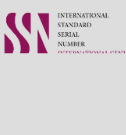Perspectives on Patterns of Metastatic Breast Cancer in Punjab Pakistan
Keywords:
Metastatic Breast Cancer, Patterns, Punjab Pakistan, Epidemiology, Survival AnalysisAbstract
Dear Editor,
I am writing to express my appreciation for the recently published article titled "Patterns of Metastatic Breast Cancer in Punjab, Pakistan" by Khurram et al. in Chronicles of Biomedical Sciences [1]. The study provides significant insights into the metastatic patterns of breast cancer in the region, a subject of paramount importance given the high prevalence and late-stage diagnosis of the disease in Pakistan. The authors' efforts in compiling and analyzing a large dataset from a tertiary oncology center are commendable. Their meticulous use of histopathological grading, TNM staging, and immunohistochemistry markers (ER, PR, HER2/neu) strengthens the reliability of their findings.
The study successfully highlights the alarming frequency of late-stage breast cancer diagnoses in Pakistan and the crucial role of proliferative biomarkers in disease progression. The finding that stage 2 and grade 2 tumors exhibited the highest biomarker expression is particularly noteworthy, underscoring the need for targeted early intervention strategies. The integration of ECOG performance status in correlation with TNM staging adds an additional layer of clinical relevance.
However, while the study effectively presents its data, a few critical points warrant further discussion. First, the retrospective nature of the study, coupled with its reliance on hospital-based data, may introduce selection bias, potentially underestimating cases that remain undiagnosed in community settings. A broader, population-based approach could further strengthen the findings. Additionally, the study briefly touches on the late presentation of patients but does not delve into sociocultural factors, which likely play a pivotal role in delayed diagnoses. Future research incorporating patient awareness, healthcare accessibility, and socioeconomic determinants could provide a more comprehensive understanding of this issue.
Another important aspect that could enhance this study is the consideration of molecular subtyping beyond ER, PR, and HER2/neu. Given the increasing recognition of triple-negative breast cancer and luminal subtypes as distinct prognostic and therapeutic categories, their inclusion in future analyses would be valuable. Moreover, while statistical significance is well presented, a more detailed discussion on its clinical implications would further enhance the study's translational value.
Despite these considerations, the study represents a vital contribution to the ongoing discourse on breast cancer metastasis in Pakistan. It underscores the urgency of early detection programs and tailored therapeutic strategies. I commend the authors for their rigorous approach and the journal for publishing such a relevant study. I look forward to future research building upon these findings.
Downloads
References
Khurram M, Afzal MS. Patterns of metastatic breast cancer in Punjab Pakistan. Chron Biomed Sci. 2025;2(1):PID37.
Downloads
Published
Issue
Section
Categories
License
Copyright (c) 2025 Open Access Journal

This work is licensed under a Creative Commons Attribution-NonCommercial 4.0 International License.



